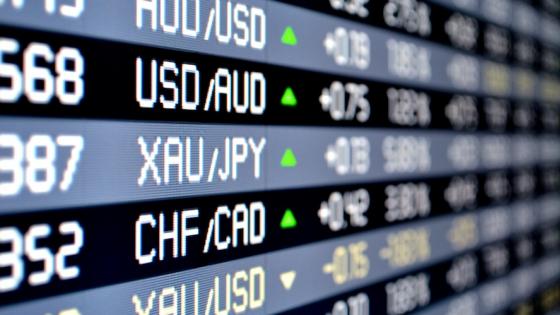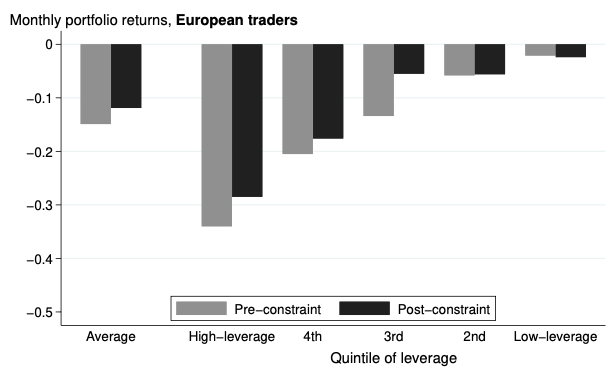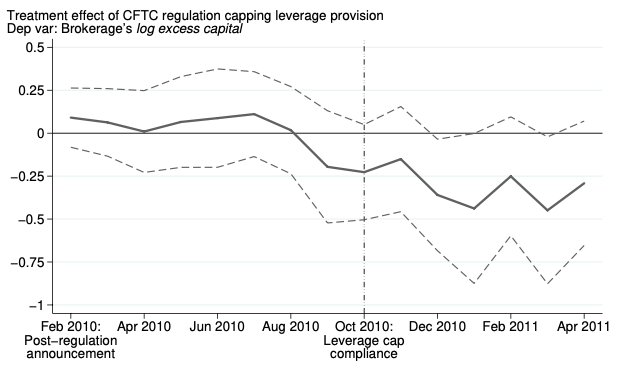Financial markets can generate considerable speculation. Recent trading frenzies in cryptocurrencies provide a vivid reminder of this fact. Established research shows that speculation is indeed a pervasive phenomenon. Behavioural distortions such as overconfidence naturally induce investors to undertake speculative trades that lower their own returns and welfare (e.g. Odean 1998, Gervais and Odean 2001). Consequently, financial market regulators have long grappled with how to prevent investors from making harmful speculative trades, while preserving markets for useful trades. The challenge is compounded by the fact that even purely speculative trading can mitigate other frictions, such as adverse selection, and improve market liquidity (e.g. Grossman and Stiglitz 1980, Kyle 1985, and Black 1986). Therefore, while policies targeted toward reducing speculation, such as financial transaction taxes or leverage restrictions, are increasingly common, more empirical research is needed to understand how these policies affect investors’ welfare and market quality.
In a recent paper, we systematically evaluate the effects of a policy that restricts leverage in the retail foreign exchange market (Heimer and Simsek 2019a). We focus on leverage because it is a major catalyst of speculative trading in practice. We find that leverage limits result in smaller losses for the most aggressive traders without harming market liquidity. Further, the policy improves belief-neutral welfare and reduces excessive financial intermediation. Our approach can be applied to other markets, and will be a useful framework for regulators as they try to curb speculation without impeding well-functioning markets.
The retail foreign exchange market is an ideal venue for our analysis because leverage limits in this market are new.1 In October 2010, under the authority of the Dodd-Frank Act, the US Commodity Futures Trading Commission (CFTC) capped the amount of leverage brokers can provide to US traders at 50:1 on all major currency pairs and 20:1 on others. Meanwhile, European regulators did not impose any leverage limits, and the maximum leverage available almost always exceeded 50:1. These market features – time-series variation in available leverage and a suitable control group of unregulated traders – allow us to use a difference-in-differences design to evaluate the costs and benefits of the leverage-constraint policy.
We inform our empirical analysis with a stylised model that captures key aspects of the retail foreign exchange market. The model features traders with heterogeneous and dogmatic beliefs that reflect behavioural distortions such as overconfidence, but these traders can also have some information about asset returns. Traders take positions based on their beliefs, and a competitive retail broker intermediates these positions. The broker sets bid-ask spreads that reflect intermediation costs and that protect the broker against informed trading. The model predicts that a leverage-constraint policy will reduce trading volume. Because traders lose money on average, due to the intermediation costs that they ultimately pay, the decline in volume improves traders’ expected return. The decline in trading volume also shrinks the intermediation revenues, as well as the size of the brokerage sector. Moreover, as in Brunnermeier et al. (2014), these effects represent belief-neutral improvements in social welfare. Intuitively, restricting trade in this market is beneficial because it reduces speculation. Speculation itself is harmful because it lowers aggregate wealth due to intermediation costs. Less obviously, the policy might remove trades of below-average quality from the market. In this case, brokers would need to charge a larger bid-ask spread to protect themselves from losses to more informed traders. Hence, the leverage-constraint policy represents a trade-off. It reduces speculation and economises on socially inefficient intermediation, but it can increase bid-ask spreads and worsen market liquidity.
Our empirical analysis comes in three parts. First, we investigate the effect of the policy on the trader-level outcomes of trading volume and portfolio returns. We compare US and European traders’ activities before and after the leverage constraint. We find that leverage limits reduce monthly trading volume by 23 % (Figure 1). The policy improves traders’ average monthly returns, with stronger effects for traders that use more leverage (Figure 2). Prior to the policy, the average high-leverage US trader loses 44 % per month. The leverage constraint policy reduces these traders’ losses by about 40 %.
Figure 1 Impulse response of trading volume to the leverage cap policy
Figure 2 Traders’ average monthly portfolio returns (by monthly leverage use) before and after the leverage cap policy
Second, we investigate the policy’s effect on the brokerage sector. We compare the excess capital, i.e. capital in excess of the regulatory requirement, of brokerages that have retail foreign exchange obligations to a control group of brokerages that are regulated by the Commodity Futures Trading Commission, but do not offer retail foreign exchange accounts. The excess capital of the affected brokerages falls by about 25 % (Figure 3). The reduction in excess capital is most pronounced for brokerages that offered traders more leverage prior to the new regulation, precisely the brokerages we expect to be most sensitive to leverage restrictions.
Figure 3 Impulse response of retail foreign exchange brokerages’ excess capital to the leverage cap policy
Third, we examine market liquidity by testing the execution prices paid by traders in this market, relative to bid and ask prices in the interbank market. We find no evidence that brokerages charged higher spreads as a result of the regulation. These results suggest that the leverage-constraint policy improves social welfare by reducing excessive intermediation without impairing market liquidity.
A plausible alternative mechanism for regulators to curtail speculation is to issue warnings about the use of leverage. In January 2010, several months before it imposed the leverage-constraint regulation, the Commodity Futures Trading Commission announced that it wanted to restrict leverage to protect traders’ welfare. The announcement brought about protest from market participants, but it did not significantly affect trading volume, traders’ demand for leverage, or their returns. Neither did it affect brokerages’ capital or bid-ask spreads. These results suggest that the leverage-constraint is the most effective policy. This finding is consistent with our model, since we assume that traders have dogmatic beliefs and therefore are not easily deterred by announcements or warnings.
We have shown that leverage restrictions can reduce speculation without imposing costs. In fact, according to the definition of Brunnermeier et al. (2014), the restrictions actually increase welfare. In addition to this belief-neutral welfare improvement, regulators might have other motivations for curbing speculation. The financial sector has recently experienced extraordinary growth, and this growth might in part reflect activities that do not benefit society (Zingales 2015). Our evidence suggests that the growth of the foreign exchange brokerage market has been excessive, and that a leverage-constraint policy is an effective tool to reduce this excess. More broadly, trading volumes have ballooned in recent decades, arguably as a result of speculative trading. Our results imply that speculative trading could have inefficiently increased the size of the financial sector, and policies that target speculative trading can address this inefficiency without hurting market liquidity. Our analysis can easily be extended to other markets and other anti-speculation policies such as financial transaction taxes, and we hope that policymakers perform similar welfare analyses before deciding on a regulatory framework.
Authors’ note: A similar version of this column appeared in the Harvard Law School Forum on Corporate Governance and Financial Regulation (Heimer and Simsek 2019b).
References
Black, F (1986), “Noise”, The Journal of Finance 41(3): 528–43.
Brunnermeier, M K, A Simsek and W Xiong (2014), “A welfare criterion for models with distorted beliefs”, The Quarterly Journal of Economics 129(4): 1753–97.
Gervais, S and T Odean (2001), “Learning to be overconfident”, Review of Financial Studies 14(1): 1–27.
Grossman, S J and J E Stiglitz (1980), “On the impossibility of informationally efficient markets”, The American Economic Review 70(3): 393–408.
Heimer, R and A Simsek (2019a), “Should retail investors‘ leverage be limited?”, Journal of Financial Economics 132(3): 1–21.
Heimer, R and A Simsek (2019b), “Should retail investors‘ leverage be limited?”, Harvard Law School Forum on Corporate Governance and Financial Regulation, 13 June.
Kyle, A S (1985), “Continuous auctions and insider trading”, Econometrica 53(6): 1315–35.
Odean, T (1998), “Volume, volatility, price, and profit when all traders are above average”, The Journal of Finance 53(6): 1887–1934.
Zingales, L (2015), “Presidential address: Does finance benefit society?”, The Journal of Finance 70(4): 1327–63.
Endnotes
[1] Leverage limits retail foreign exchange market in the US were only introduced in 2010, whereas a leverage limit of 2:1 for US equities has existed since 1934.







